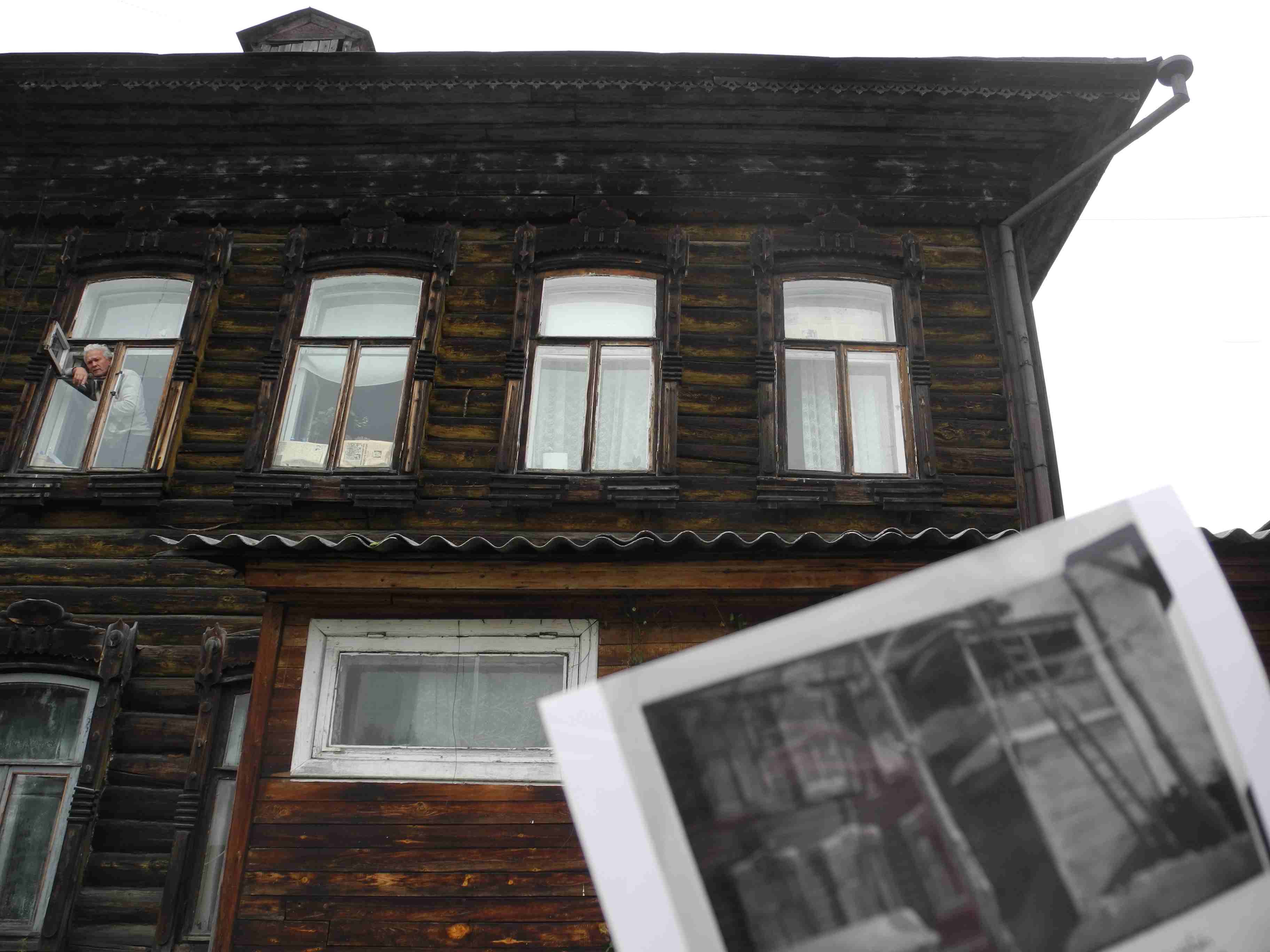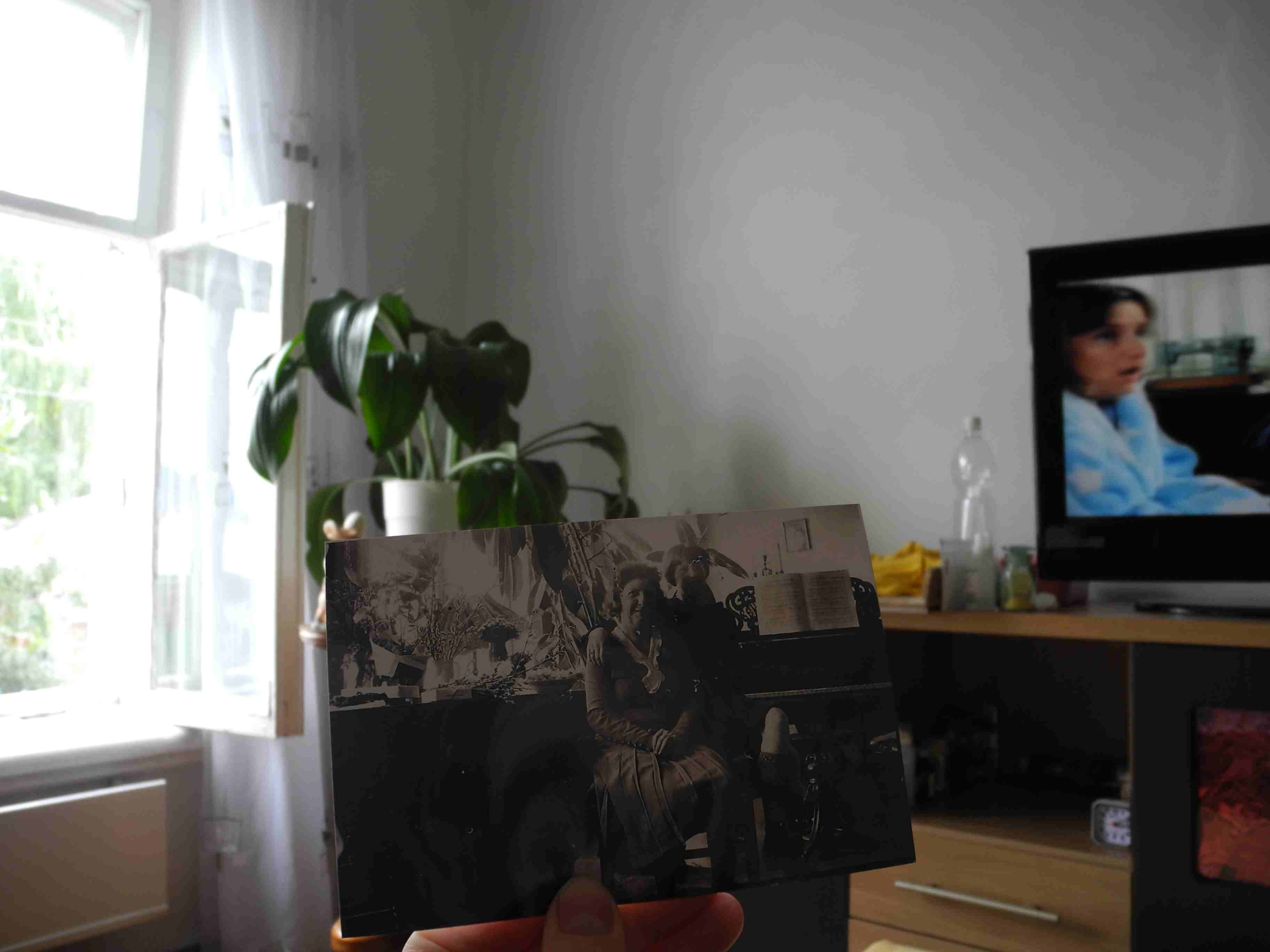11 | Tomsk 30.08.2014 and Berlin 8.9.2014
Invitation to No. 9, Krivaya Street

Together with Julia and her camera I went back to Krivaya Street,
for the fifth or sixth time now. Igor, a colleague from
Tomsk State University who lives in this historic part of
the city not far away, joined us, too.
His knowledge as a local and as someone interested in
the city's architectural history was instrumental in
determining that it was indeed this house where
my grandfather had lived with his family.
We started by filming the house from the street, looking
at the design of the wooden window frames in more detail
where we could now make out three candles, possibly.
As we were standing in the yard, a white-haired man
stuck his head out of a window on the upper floor,
curious to find out what this bunch of people were doing
in his yard. Were we looking for him, he asked,
and we explained. He came downstairs and
invited us inside his flat. How lucky is that!?
Evidently a bit bemused, Valeri is very friendly
and seems genuinely appreciative of my quest
to find out more about my grandfather's and mother's
time in Siberia.
"Who doesn't study their past doesn't have a future",
he tells me. Inside the apartment we are greeted by
his sister and his grown-up son was just leaving.
It was Svetlana who Igor and I had met the previous year.
She had looked out the window then and helped
the other two women find their friend Tamara.
Inside, the apartment is very light. Five windows
are lining the wide side of the building, and the ceilings
are remarkably high. In general, the flat is spacious
and good quality. The brother and sister who appear to be
in their mid-fifties let the three of us
walk through the rooms, answer questions, ask their own
questions and point out little details.
The famous Russian stove is no longer there, but I think
I can identify where it has once been, in the corner
of the first room proper, where today's kitchen is located.
Several rooms are walk-through rooms and of the bath and
the toilet I only manage to catch a glimpse on my way out:
They are squeezed inside spaces like built-in cupboards
on either side of the corridor-room near the entrance.
In the corner room, which appears to be the lounge
I take out the picture from The Album labelled
"in our home" and hold it up to try and picture
my grandmother and mother sitting in front of a
"Becker" piano.
I was a bit doubtful whether that was really taken
in Tomsk and not in their Schoeneberg flat in Berlin.
A journalist doing regular travel and history programmes
for Tomsk independent tv station TV2, showed no surprise
at all and told me that the family will have had
no problem renting such a piano in Tomsk with its
intelligentsia population, even at that time.
They may have put a small ad in the local paper, or
perhaps even somebody at Shakhtstroi organised it for them.
I studied the small ads in Krasnoe Znamya and found
ads by or on behalf of mining engineers at Shakhtstroi,
looking for an apartment, for a room, and ads
for domestic help wanted. Yes, I can just imagine
my mother sitting in this room. There is even a plant
standing in the same spot, as Valeri points out.
He seems equally thrilled at these discoveries and speculations.

Suddenly, Svetlana presents me with a painting
by her son who died in his teens.
I was completely dumbfounded by this gesture. Wow.
There was something special about this and about being
welcomed in such a friendly and generous manner
which i find charactersitic for Tomsk.
The icon-type painting by the young resident of Krivaya
made it back to Berlin in one piece and
it does feel like I've brought a piece of Tomsk,
a piece of Siberia with me to Berlin.
It feels special and I feel honoured
that I'm allowed to experience this.